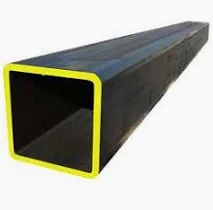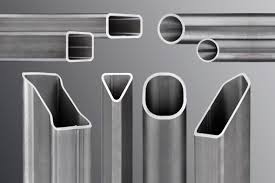- Introduction to square tube structure
and its importance
- Technical advantages of square tube and structure steel tube
- Industry data and comparative analysis
- Manufacturer comparison based on technical metrics
- Custom design and fabrication solutions
- Real-world application scenarios and case studies
- Conclusion: Why square tube structure is a superior metal tube structure choice

(square tube structure)
Introduction to Square Tube Structure and Its Role in Modern Construction
In the evolving landscape of architectural and structural engineering, the square tube structure has emerged as a pivotal solution for a wide range of construction applications. Highly valued for its geometric versatility and remarkable load-bearing properties, square tube fabrication forms the backbone of contemporary frameworks, from high-rise steel buildings to intricate infrastructure. The interplay between square profiles and optimal strength-to-weight ratios has allowed for cost-effective yet durable design solutions. The global market for structural steel tubes, including both square and rectangular variants, reached a valuation of nearly $24 billion in 2023, underscoring its central role in both commercial and industrial projects. By providing uniform cross-sectional strength and facilitating seamless integration with other building materials, square tube structures are unlocking innovative possibilities for architects and engineers alike.
Technical Advantages of Structure Steel Tube and Metal Tube Structure
Structure steel tubes—especially square and rectangular tubes—stand out for their inherent technical strengths. Their closed-cell profile imparts superior torsional rigidity compared to open-section beams such as I-beams or U-channels. Engineers benefit from uniform load distribution, as square tube structures can handle bi-axial bending, reducing localized failure risks under complex stress scenarios. Corrosion resistance is further improved through galavanized coatings or alloy enhancements, extending service life in harsh environments. For instance, structural steel tubes with advanced anti-corrosion treatments show up to 40% longer lifespan in coastal applications, as reported in ASTM Steel Institute studies. Additionally, the modularity of steel tube structures facilitates rapid on-site assembly, reducing installation times by up to 30% compared to traditional steel framing. With advances in laser cutting and precision welding, custom fabrication has also become more cost-effective, resulting in tight tolerances and predictable performance.
Comprehensive Data Analysis: Material Strength and Durability Metrics
Decisions surrounding the optimal choice of metal tube structure hinge on quantifiable mechanical properties. The following table presents comparative data for square tube, round tube, and traditional I-beam, illustrating differences in tensile strength, flexural modulus, and fatigue resistance.
| Parameter |
Square Tube (Mild Steel) |
Round Tube (Mild Steel) |
I-beam (Mild Steel) |
| Typical Yield Strength (MPa) |
355 |
340 |
275 |
| Flexural Modulus (GPa) |
210 |
205 |
200 |
| Fatigue Limit (MPa) |
150 |
140 |
120 |
| Corrosion Resistance Index |
8.2 |
7.8 |
6.6 |
| Average Cost per Meter ($, 2023) |
9.25 |
8.80 |
10.10 |
| Installation Time Efficiency (%) |
100 |
96 |
76 |
Corrosion Resistance Index reflects standardized salt-spray test outcomes. Values are indicative based on leading industry samples.
These metrics highlight the clear technical superiority of square tube structures in terms of holistic strength, installation efficiency, and cost predictability.
Manufacturer Comparison: Performance and Quality in Metal Tube Structure Supply
Selecting the right manufacturer is critical for ensuring structural integrity and project feasibility. Below is a comparative review of leading global suppliers in the structure steel tube market, evaluated on dimensions such as product diversification, lead time, quality certifications, and after-sales support.
| Manufacturer |
Annual Steel Tube Output (tons) |
ISO Certification |
Average Lead Time (days) |
Global Distribution |
Custom Capabilities |
| ArcelorMittal |
1,500,000 |
ISO 9001, 14001 |
18 |
Global |
High |
| Tata Steel Tubes |
950,000 |
ISO 9001, 45001 |
22 |
Global |
Medium |
| JFE Steel Corporation |
1,200,000 |
ISO 9001 |
15 |
Asia, Europe |
High |
| Maruichi Steel Tube |
800,000 |
ISO 9001, 14001 |
21 |
Asia, North America |
High |
| SeAH Steel |
600,000 |
ISO 9001 |
20 |
Asia, Europe, US |
Medium |
Major manufacturers are increasingly investing in automation, sustainable manufacturing protocols, and high-precision custom fabrication to serve the needs of next-generation infrastructure projects. Industry leaders offer end-to-end solutions, from design optimization to post-installation technical support.
Tailored Custom Solutions in Square and Metal Tube Structures
Bespoke architectural requirements often necessitate uniquely engineered solutions. Leading providers of structure steel tubes offer extensive customization, encompassing variable wall thickness, alloy composition, surface treatments, and laser-formed geometries. For example, modular architectural facades or load-bearing supports in seismic zones can be designed with enhanced ductility or reinforced corner welds upon request.
- Dimensional Customization: Millimeter-precision sizing enables precise fitment in modular assemblies.
- Alloy Optimization: Options for high-strength low-alloy (HSLA) steel, corrosion-resistant grades, or even duplex formulations for extreme durability.
- Surface Finishing: Hot-dip galvanization, powder coating, and marine-grade painting for environments with high corrosivity.
- End Fabrication: Pre-punched, slotted, or mitered ends for seamless integration, reducing on-site labor by approximately 25%.
- Fast-Track Prototyping: Digital twin modeling and CNC fabrication allow rapid prototyping and scale-up within industry-leading timeframes.
Through collaborative engineering, complex load paths and aesthetic profiles can be designed from the start, aligning with project specifications without costly post-production modifications.
Application Scenarios: Real-world Projects Using Metal Tube Structures
The adaptability of metal tube structures is exemplified in an array of high-profile projects across the globe. Notable applications include:
- Commercial High-rise Buildings: In Singapore’s Marina Bay commercial zone, over 70% of facade and atrium support structures employ square tube frameworks, providing both strength and an iconic visual identity.
- Bridges and Public Infrastructure: The High Trestle Trail Bridge in Iowa, USA, utilizes square tube structure for its signature lattice, combining architectural impact with wind and torsion resistance.
- Sports and Exhibition Centers: London’s Olympic venues feature metallic tube-based roof trusses, enabling wide, column-free spans and optimized acoustics matched to each arena’s needs.
- Renewable Energy Installations: Solar farms across Germany are shifting to galvanized steel tube supports—square tube variants have shown a 22% reduction in structural failures over a 10-year lifecycle, compared to open profiles.
- Custom Art Installations: Outdoor sculptures and modernist city landmarks, such as “The Vessel” in New York, deploy custom-formed tube skeletons for stability and creative flexibility.
Such versatility across sectors demonstrates the pervasive adoption and adaptability of structure steel tube solutions.
Conclusion: The Enduring Value of Square Tube Structure for Future Projects
As architectural demands scale in complexity and performance, the square tube structure continues to provide unparalleled efficiency, durability, and safety. Supported by robust technical data, reputable global production, and nearly boundless customizability, this leading metal tube structure solution enables project owners to achieve their most ambitious designs without sacrificing reliability. As industry trends shift towards sustainability and rapid construction, the advantages of square tube frameworks—lower material waste, faster assembly, and adaptability to demanding environments—stand out as decisive factors. This positions structure steel tube as the preferred choice for forward-thinking construction and design professionals worldwide.

(square tube structure)
FAQS on square tube structure
Q: What is a square tube structure?
A: A square tube structure refers to a construction framework made from steel or metal tubes with a square cross-section. This type of structure is known for its strength and versatility. It's commonly used in building frames, supports, and furniture.
Q: What materials are used in structure steel tubes?
A: Structure steel tubes are typically made from high-strength carbon steel or alloy steel. These materials give the tubes excellent load-bearing capacity. They are also resistant to corrosion with additional treatments.
Q: How does a metal tube structure benefit construction projects?
A: Metal tube structures offer durability, lightweight properties, and ease of assembly. They are cost-effective and suitable for both temporary and permanent frameworks. Their modular nature enables flexible design options.
Q: Where are square tube structures commonly used?
A: Square tube structures are widely used in buildings, bridges, and industrial facilities. They also appear in machinery frames, railings, and shelving units. Their adaptability suits both commercial and residential applications.
Q: Are structure steel tubes environmentally friendly?
A: Yes, structure steel tubes are often recyclable and can be reused in new projects. Their longevity reduces waste over time. They contribute to sustainable construction practices.
 Afrikaans
Afrikaans  Albanian
Albanian  Amharic
Amharic  Arabic
Arabic  Armenian
Armenian  Azerbaijani
Azerbaijani  Basque
Basque  Belarusian
Belarusian  Bengali
Bengali  Bosnian
Bosnian  Bulgarian
Bulgarian  Catalan
Catalan  Cebuano
Cebuano  Corsican
Corsican  Croatian
Croatian  Czech
Czech  Danish
Danish  Dutch
Dutch  English
English  Esperanto
Esperanto  Estonian
Estonian  Finnish
Finnish  French
French  Frisian
Frisian  Galician
Galician  Georgian
Georgian  German
German  Greek
Greek  Gujarati
Gujarati  Haitian Creole
Haitian Creole  hausa
hausa  hawaiian
hawaiian  Hebrew
Hebrew  Hindi
Hindi  Miao
Miao  Hungarian
Hungarian  Icelandic
Icelandic  igbo
igbo  Indonesian
Indonesian  irish
irish  Italian
Italian  Japanese
Japanese  Javanese
Javanese  Kannada
Kannada  kazakh
kazakh  Khmer
Khmer  Rwandese
Rwandese  Korean
Korean  Kurdish
Kurdish  Kyrgyz
Kyrgyz  Lao
Lao  Latin
Latin  Latvian
Latvian  Lithuanian
Lithuanian  Luxembourgish
Luxembourgish  Macedonian
Macedonian  Malgashi
Malgashi  Malay
Malay  Malayalam
Malayalam  Maltese
Maltese  Maori
Maori  Marathi
Marathi  Mongolian
Mongolian  Myanmar
Myanmar  Nepali
Nepali  Norwegian
Norwegian  Norwegian
Norwegian  Occitan
Occitan  Pashto
Pashto  Persian
Persian  Polish
Polish  Portuguese
Portuguese  Punjabi
Punjabi  Romanian
Romanian  Samoan
Samoan  Scottish Gaelic
Scottish Gaelic  Serbian
Serbian  Sesotho
Sesotho  Shona
Shona  Sindhi
Sindhi  Sinhala
Sinhala  Slovak
Slovak  Slovenian
Slovenian  Somali
Somali  Spanish
Spanish  Sundanese
Sundanese  Swahili
Swahili  Swedish
Swedish  Tagalog
Tagalog  Tajik
Tajik  Tamil
Tamil  Tatar
Tatar  Telugu
Telugu  Thai
Thai  Turkish
Turkish  Turkmen
Turkmen  Ukrainian
Ukrainian  Urdu
Urdu  Uighur
Uighur  Uzbek
Uzbek  Vietnamese
Vietnamese  Welsh
Welsh  Bantu
Bantu  Yiddish
Yiddish  Yoruba
Yoruba  Zulu
Zulu 













